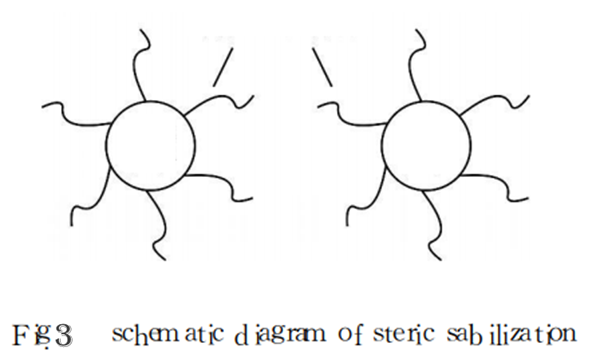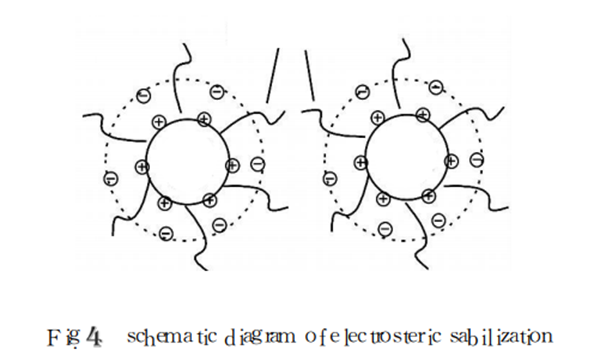- Home
- Products
- Elementary
- Boride Powder
- 3D Printing Powder
- Sulfide Powder
- Oxide Powder
- Carbide powder
- Nitride Powder
- Silicide Powder
- Hydride Powder
- Telluride Powder
- Selenide Powder
- Stearic Acid Series
- Phosphide Powder
- Nanoparticles
- Metal Alloy
- MAX Phase
- Lithium Battery Anode
- Surfactant
- Molecular sieves
- Concrete Admixtures
- News
- Answers
- Contact
- About
How to improve nanoparticles to make them more superior nanomaterials
Pile of nanoparticles
The heap of nanoparticles can be separated right into two types: soft jumble and also difficult cluster. Soft agglomeration is mainly brought on by the electrostatic force in between fragments and van der Waals force. Due to the weak force, soft pile can pass some chemical techniques.
The law or the application of power to get rid of; the development of hard cluster along with electrostatic pressures and also van der Waals pressures, there are chemical bonds, so hard agglomerates are difficult to damage, need to take some special methods to control.
 < img src="// ueeshop.ly200-cdn. com/u _ file/UPAI/UPAI779
/ 1907/photo/1661a376e4. png"/ > Schematic diagram of agglomeration of nanoparticles Dispersion of nanoparticles One of the techniques to avoid the formation of high-density, hard-block precipitates of nanoparticles is to lower van der Waals attraction or interaction between groups, to ensure that the main particles are not conveniently agglomerated to form second fragments, therefore staying clear of further inter-atomic bonding. This results in the development of high-density, hard-blocked precipitates. The anti-agglomeration device of nanoparticles is split right into: (1) electrostatic stablizing (DLVO concept); (2) steric stabilization; (3) electrostatic steric stabilization.
Nanoparticle diffusion theory Electrostatic stabilization device (DLVO theory)
The electrostatic stabilization system, additionally called the electric dual layer stabilization mechanism, forms an electric dual layer by readjusting the pH value to generate a particular quantity of surface fee on the surface area of the fragment. The destination between the fragments is greatly minimized by the repulsive pressure between the electrical double layers, consequently recognizing the dispersion of the nanoparticles. The system is shown as received Figure 2.
< img src="// ueeshop.ly200-cdn. com/u _ file/UPAI/UPAI779
/ 1907/photo/1661a376e4. png"/ > Schematic diagram of agglomeration of nanoparticles Dispersion of nanoparticles One of the techniques to avoid the formation of high-density, hard-block precipitates of nanoparticles is to lower van der Waals attraction or interaction between groups, to ensure that the main particles are not conveniently agglomerated to form second fragments, therefore staying clear of further inter-atomic bonding. This results in the development of high-density, hard-blocked precipitates. The anti-agglomeration device of nanoparticles is split right into: (1) electrostatic stablizing (DLVO concept); (2) steric stabilization; (3) electrostatic steric stabilization.
Nanoparticle diffusion theory Electrostatic stabilization device (DLVO theory)
The electrostatic stabilization system, additionally called the electric dual layer stabilization mechanism, forms an electric dual layer by readjusting the pH value to generate a particular quantity of surface fee on the surface area of the fragment. The destination between the fragments is greatly minimized by the repulsive pressure between the electrical double layers, consequently recognizing the dispersion of the nanoparticles. The system is shown as received Figure 2.

- < img src="// ueeshop.ly200-cdn. com/u _ file/UPAI/UPAI779/ 1907/photo/38c1a5ba33. png"/ > Stochastic stabilization device The steric stablizing device is to include a certain quantity of uncharged polymer substance to the suspension to adsorb it around the nanoparticles to form a microcell state, which triggers repulsion between the particles, therefore accomplishing the function of dispersion. The system representation is revealed in Figure 4.
- Electrostatic steric stabilization device
The pH worth of the polyelectrolyte optimizes the dissociation degree of the polyelectrolyte, to make sure that the polyelectrolyte on the surface of the particle reaches the saturated adsorption, and also both together work to consistently disperse the nanoparticles. The device diagram is received Figure 3.
 < img src="// ueeshop.ly200-cdn.
com/u _ file/UPAI/UPAI779/ 1907/photo/ed7d9c96f4. png"/ > Nanoparticle diffusion method The diffusion of nanoparticles in the tool is generally divided right into three stages: 1 fluid wetting the strong bits; 2 distributing the bigger aggregates right into smaller particles by exterior force; 3 supporting the distributed fragments, making sure that the powder bits are in the fluid The stage stays evenly dispersed for an extended period of time to stop the spread fragments from re-aggregating. According to different diffusion devices, it can be divided into mechanical activity approach and also surface area adjustment approach.
< img src="// ueeshop.ly200-cdn.
com/u _ file/UPAI/UPAI779/ 1907/photo/ed7d9c96f4. png"/ > Nanoparticle diffusion method The diffusion of nanoparticles in the tool is generally divided right into three stages: 1 fluid wetting the strong bits; 2 distributing the bigger aggregates right into smaller particles by exterior force; 3 supporting the distributed fragments, making sure that the powder bits are in the fluid The stage stays evenly dispersed for an extended period of time to stop the spread fragments from re-aggregating. According to different diffusion devices, it can be divided into mechanical activity approach and also surface area adjustment approach.
- Mechanical action
- Surface adjustment
- Surface area adjustment of nanoparticles by not natural substances
- Surface alteration of nanoparticles by raw material
 < img src ="// ueeshop.ly200-cdn.
com/u _ file/UPAI/UPAI779/ 1907/photo/c845513ec8. png"/ > conclusion The surface modification technology of nanoparticles is an edge self-control carefully related to numerous other self-controls, consisting of colloidal chemistry, natural chemistry, crystallography, nanomaterials, contemporary tool analysis and also screening. The surface covering modification innovation has been extensively utilized in the surface area modification of nanometers, and the study results in this area likewise reveal that the surface area coating innovation has a good growth possibility. However, the alteration mechanism, adjustment method and also equipment, as well as the modification impact characterization are still not ideal. Sometimes, the problem can not be fixed fundamentally, and also further research study is quickly needed. Because of the considerable adjustments in the physical as well as chemical residential properties of the surface-treated bits, the growth of nano surface alteration technology is considered a crucial ways of creating new materials in the future. With the continuous research study as well as understanding of nano-particles, and further expedition of the surface modification of nano-powders, nano-technology will definitely apply possible power in various areas and will generate a great culture. Advantages and also financial benefits.
< img src ="// ueeshop.ly200-cdn.
com/u _ file/UPAI/UPAI779/ 1907/photo/c845513ec8. png"/ > conclusion The surface modification technology of nanoparticles is an edge self-control carefully related to numerous other self-controls, consisting of colloidal chemistry, natural chemistry, crystallography, nanomaterials, contemporary tool analysis and also screening. The surface covering modification innovation has been extensively utilized in the surface area modification of nanometers, and the study results in this area likewise reveal that the surface area coating innovation has a good growth possibility. However, the alteration mechanism, adjustment method and also equipment, as well as the modification impact characterization are still not ideal. Sometimes, the problem can not be fixed fundamentally, and also further research study is quickly needed. Because of the considerable adjustments in the physical as well as chemical residential properties of the surface-treated bits, the growth of nano surface alteration technology is considered a crucial ways of creating new materials in the future. With the continuous research study as well as understanding of nano-particles, and further expedition of the surface modification of nano-powders, nano-technology will definitely apply possible power in various areas and will generate a great culture. Advantages and also financial benefits.
Luoyang Technology Co., Ltd is an expert Zinc Nanoparticles producer with over 12 years experience in chemical products r & d. If you are seeking high top quality Zinc Nanoparticles, please feel complimentary to contact us and also send out a query.
Inquiry us
PREVIOUS NEWS
The role of redispersible latex powder in mortar
NEXT NEWS
 < img src="// ueeshop.ly200-cdn.
com/u _ file/UPAI/UPAI779/ 1907/photo/ed7d9c96f4. png"/ > Nanoparticle diffusion method The diffusion of nanoparticles in the tool is generally divided right into three stages: 1 fluid wetting the strong bits; 2 distributing the bigger aggregates right into smaller particles by exterior force; 3 supporting the distributed fragments, making sure that the powder bits are in the fluid The stage stays evenly dispersed for an extended period of time to stop the spread fragments from re-aggregating. According to different diffusion devices, it can be divided into mechanical activity approach and also surface area adjustment approach.
< img src="// ueeshop.ly200-cdn.
com/u _ file/UPAI/UPAI779/ 1907/photo/ed7d9c96f4. png"/ > Nanoparticle diffusion method The diffusion of nanoparticles in the tool is generally divided right into three stages: 1 fluid wetting the strong bits; 2 distributing the bigger aggregates right into smaller particles by exterior force; 3 supporting the distributed fragments, making sure that the powder bits are in the fluid The stage stays evenly dispersed for an extended period of time to stop the spread fragments from re-aggregating. According to different diffusion devices, it can be divided into mechanical activity approach and also surface area adjustment approach.
 < img src ="// ueeshop.ly200-cdn.
com/u _ file/UPAI/UPAI779/ 1907/photo/c845513ec8. png"/ > conclusion The surface modification technology of nanoparticles is an edge self-control carefully related to numerous other self-controls, consisting of colloidal chemistry, natural chemistry, crystallography, nanomaterials, contemporary tool analysis and also screening. The surface covering modification innovation has been extensively utilized in the surface area modification of nanometers, and the study results in this area likewise reveal that the surface area coating innovation has a good growth possibility. However, the alteration mechanism, adjustment method and also equipment, as well as the modification impact characterization are still not ideal. Sometimes, the problem can not be fixed fundamentally, and also further research study is quickly needed. Because of the considerable adjustments in the physical as well as chemical residential properties of the surface-treated bits, the growth of nano surface alteration technology is considered a crucial ways of creating new materials in the future. With the continuous research study as well as understanding of nano-particles, and further expedition of the surface modification of nano-powders, nano-technology will definitely apply possible power in various areas and will generate a great culture. Advantages and also financial benefits.
< img src ="// ueeshop.ly200-cdn.
com/u _ file/UPAI/UPAI779/ 1907/photo/c845513ec8. png"/ > conclusion The surface modification technology of nanoparticles is an edge self-control carefully related to numerous other self-controls, consisting of colloidal chemistry, natural chemistry, crystallography, nanomaterials, contemporary tool analysis and also screening. The surface covering modification innovation has been extensively utilized in the surface area modification of nanometers, and the study results in this area likewise reveal that the surface area coating innovation has a good growth possibility. However, the alteration mechanism, adjustment method and also equipment, as well as the modification impact characterization are still not ideal. Sometimes, the problem can not be fixed fundamentally, and also further research study is quickly needed. Because of the considerable adjustments in the physical as well as chemical residential properties of the surface-treated bits, the growth of nano surface alteration technology is considered a crucial ways of creating new materials in the future. With the continuous research study as well as understanding of nano-particles, and further expedition of the surface modification of nano-powders, nano-technology will definitely apply possible power in various areas and will generate a great culture. Advantages and also financial benefits.